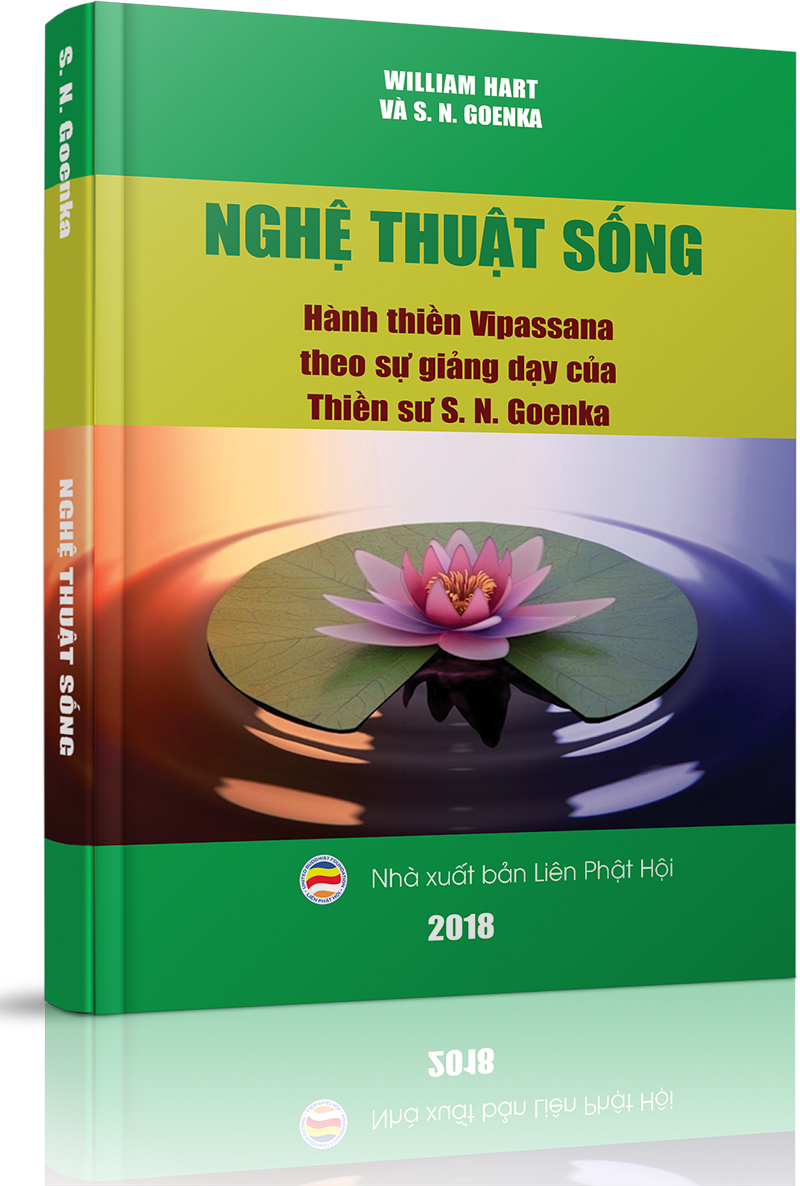Đừng than khóc khi sự việc kết thúc, hãy mỉm cười vì sự việc đã xảy ra. (Don’t cry because it’s over, smile because it happened. )Dr. Seuss
Đừng than khóc khi sự việc kết thúc, hãy mỉm cười vì sự việc đã xảy ra. (Don’t cry because it’s over, smile because it happened. )Dr. Seuss
Một người trở nên ích kỷ không phải vì chạy theo lợi ích riêng, mà chỉ vì không quan tâm đến những người quanh mình. (A man is called selfish not for pursuing his own good, but for neglecting his neighbor's.)Richard Whately
Hãy đặt hết tâm ý vào ngay cả những việc làm nhỏ nhặt nhất của bạn. Đó là bí quyết để thành công. (Put your heart, mind, and soul into even your smallest acts. This is the secret of success.)Swami Sivananda
Trời không giúp những ai không tự giúp mình. (Heaven never helps the man who will not act. )Sophocles
Hãy tin rằng bạn có thể làm được, đó là bạn đã đi được một nửa chặng đường. (Believe you can and you're halfway there.)Theodore Roosevelt
Ai dùng các hạnh lành, làm xóa mờ nghiệp ác, chói sáng rực đời này, như trăng thoát mây che.Kinh Pháp cú (Kệ số 173)
Càng giúp người khác thì mình càng có nhiều hơn; càng cho người khác thì mình càng được nhiều hơn.Lão tử (Đạo đức kinh)
Tôi tìm thấy hy vọng trong những ngày đen tối nhất và hướng về những gì tươi sáng nhất mà không phê phán hiện thực. (I find hope in the darkest of days, and focus in the brightest. I do not judge the universe.)Đức Đạt-lai Lạt-ma XIV
Vết thương thân thể sẽ lành nhưng thương tổn trong tâm hồn sẽ còn mãi suốt đời. (Stab the body and it heals, but injure the heart and the wound lasts a lifetime.)Mineko Iwasaki
Nụ cười biểu lộ niềm vui, và niềm vui là dấu hiệu tồn tại tích cực của cuộc sống.Tủ sách Rộng Mở Tâm Hồn
Trang chủ »» Danh mục »» TỦ SÁCH RỘNG MỞ TÂM HỒN »» The Art of Living »» Appendix B. PASSAGE ON VEDANĀ FROM THE SUTTAS »»
The Art of Living
»» Appendix B. PASSAGE ON VEDANĀ FROM THE SUTTAS
 Xem Mục lục
Xem Mục lục  Vietnamese || Đối chiếu song ngữ
Vietnamese || Đối chiếu song ngữ- none
- INTRODUCTION
- Chapter 1. THE SEARCH
- Chapter 2. THE STARTING POINT
- Chapter 3. THE IMMEDIATE CAUSE
- Chapter 4. THE ROOT OF THE PROBLEM
- Chapter 5. THE TRAINING OF MORAL CONDUCT
- Chapter 6. THE TRAINING OF CONCENTRATION
- Chapter 7. THE TRAINING OF WISDOM
- Chapter 8. AWARENESS AND EQUANIMITY
- Chapter 9. THE GOAL
- Chapter 10. THE ART OF LIVING
- Appendix A. THE IMPORTANCE OF VEDANĀ IN THE TEACHING OF THE BUDDHA
- »» Appendix B. PASSAGE ON VEDANĀ FROM THE SUTTAS

Through the sky blow many different winds, from east and west, from north and south, dust-laden or dustless, cold or hot, fierce gales or gentle breezes—many winds blow. In the same way, in the body sensations arise, pleasant, unpleasant, or neutral. When a meditator, practising ardently, does not neglect his faculty of thorough understanding (sampajañña), then such a wise person fully comprehends sensations. Having fully comprehended them, he becomes freed from all impurities in this very life. At life's end, such a person, being established in Dhamma and understanding sensations perfectly, attains the indescribable stage beyond the conditioned world.
—S. XXXVI (II). ii. 12 (2), Paṭhama Ākāsa Sutta
And how does a meditator dwell observing body in body? In this case a meditator goes to the forest, to the foot of a tree, or to a solitary abode. There he sits down cross-legged with body erect, and fixes his attention in the area around the mouth. With awareness he breathes in and breathes out. Breathing in a long breath he knows rightly, “I am breathing in a long breath.” Breathing out a long breath he knows rightly, “I am breathing out a long breath.” Breathing in a short breath he knows rightly, “I am breathing in a short breath.” Breathing out a short breath he knows rightly, “I am breathing out a short breath.” “Feeling the entire body I shall breathe in”; thus he trains himself. “Feeling the entire body I shall breathe out”; thus he trains himself. “With bodily activities calmed I shall breathe in”; thus he train himself. “With bodily activities calmed, I shall breathe out”; thus he trains himself.
—D. 22/M. 10, Satipaṭṭhāna Sutta, Ānāpāna-pabbaṃ
When a sensation arises in the meditator, pleasant, unpleasant, or neutral, he understands, “A pleasant, unpleasant, or neutral sensation has arisen in me. It is based on something, it is not without a base. On what is it based? On this very body.” Thus he abides observing the impermanent nature of the sensation within the body.
—S. XXXVI (II). i. 7, Paṭhama Gelañña Sutta
The meditator understands, “There has arisen in me this pleasant, unpleasant, or neutral experience. It is composed, of a gross nature, dependent on conditions. But what really exists, what is most excellent, is equanimity.” Whether a pleasant experience has arisen in him, or an unpleasant, or a neutral one, it ceases, but equanimity remains.
—M. 152, Indriya Bhāvanā Sutta
There are three types of sensation: pleasant, unpleasant, and neutral. All three are impermanent, composed, dependent on conditions, subject to decay, to decline, to fading away, to ceasing. Seeing this reality, the well- instructed follower of the Noble Path becomes equanimous toward pleasant, unpleasant, and neutral sensations. By developing equanimity, he becomes detached; by developing detachment, he becomes liberated.
—M. 74, Dīghanakha Sutta
If a meditator abides observing the impermanence of pleasant sensation within the body, its decline, fading away and ceasing, and also observing his own relinquishing of attachment to such sensation, then his underlying conditioning of craving for pleasant sensation within the body is eliminated. If he abides observing the impermanence of unpleasant sensation within the body, then his underlying conditioning of aversion toward unpleasant sensation within the body is eliminated. If he abides observing the impermanence of neutral sensation within the body, then his underlying conditioning of ignorance toward neutral sensation within the body is eliminated.
—S. XXXVI (II). i. 7, Paṭhama Gelañña Sutta
When his underlying conditionings of craving for pleasant sensation, of aversion toward unpleasant sensation, and of ignorance toward neutral sensation are eradicated, the meditator is called one who is totally free of underlying conditionings, who has seen the truth, who has cut off all craving and aversion, who has broken all bondages, who has fully realized the illusory nature of the ego, who has made an end of suffering.
—S. XXXVI (II). i. 3, Pahāna Sutta
The view of reality as it is becomes his right view. Thought of reality as it is becomes his right thought. Effort toward reality as it is becomes his right effort. Awareness of reality as it is becomes his right awareness. Concentration on reality as it is becomes his right concentration. His actions of body and speech and his livelihood become truly purified. Thus the Noble Eightfold Path advances in him toward development and fulfillment.
—M. 149, Mahā-Saḷāyatanika Sutta
The faithful follower of the Noble Path makes efforts, and by persisting in his efforts becomes mindful, and by remaining mindful becomes concentrated, and by maintaining concentration develops right understanding, and by understanding rightly develops real faith, being confident in knowing, “Those truths of which before I had only heard, now I dwell having experienced them directly within the body, and I observe them with penetrating insight.”
—S. XLVIII (IV). v. 10 (50), Āpana Sutta (spoken by Sāriputta, chief disciple of the Buddha)
GLOSSARY OF PĀLI TERMS
Included in this list are Pāli terms that appear in the text as well as some other terms of importance in the teaching of the Buddha.
ānāpāna. Respiration. Ānāpāna-sati—awareness of respiration.
anattā. Not self, egoless, without essence, without substance. One of the three basic characteristics of phenomena, along with anicca and dukkha.
anicca. Impermanent, ephemeral, changing. One of the three basic characteristics of phenomena, along with anattā and dukkha.
anusaya. The unconscious mind; latent, underlying conditioning; dormant mental impurity (also anusaya-kilesa).
arahant/arahat. Liberated being. One who has destroyed all impurities of the mind.
ariya. Noble; saintly person. One who has purified the mind to the point of having experienced ultimate reality (nibbāna).
ariya aṭṭhaṅgika magga. The Noble Eightfold Path leading to liberation from suffering. It is divided into three trainings, namely—
sīla. morality, purity of vocal and physical actions:
sammā-vācā. right speech, sammā-kammanta. right actions, sammā-ājīva. right livelihood;
samādhi. concentration, control of one's own mind:
sammā-vāyāma. right effort,
sammā-sati. right awareness,
sammā-samādhi. right concentration;
paññā. wisdom, insight which totally purifies the mind:
sammā-saṅkappa. right thought,
sammā-diṭṭhi. right understanding.
ariya sacca. Noble truth. The Four Noble Truths are (1) the truth of suffering; (2) the truth of the origin of suffering; (3) the truth of the cessation of suffering; (4) the truth of the path leading to the cessation of suffering.
bhaṅga. Dissolution. An important stage in the practice of Vipassana. The experience of the dissolution of the apparent solidity of the body into subtle vibrations that are continually arising and passing away.
bhāvanā. Mental development, meditation. The two divisions of bhāvanā are the development of tranquility (samatha-bhāvanā), corresponding to concentration of mind (samādhi), and the development of insight (vipassanā-bhāvanā), corresponding to wisdom (paññā). Development of samatha will lead to the states of mental absorption; development of vipassanā will lead to liberation.
bhāvanā-mayā paññā. Experiential wisdom. See paññā. bhikkhu. (Buddhist) monk; meditator. Feminine form
bhikkhuṇī—nun.
Buddha. Enlightened person. One who has discovered the way to liberation, has practised it, and has reached the final goal by his own efforts.
cintā-mayā paññā. Intellectual wisdom. See paññā.
citta. Mind. Cittānupassanā—observation of the mind. See sati- paṭṭhāna.
dhamma. Phenomenon; object of mind; nature; natural law; law of liberation, i.e., teaching of an enlightened person. Dhammānu- passanā—observation of the contents of the mind. See satipaṭṭhāna. (Sanskrit dharma.)
dukkha. Suffering, unsatisfactoriness. One of the three basic characteristics of phenomena, along with anatta and anicca.
Gotama. Family name of the historical Buddha. (Sanskrit Gautama.)
Hīnayāna. Literally, “lesser vehicle.” Term used for Theravāda
Buddhism by those of other schools. Pejorative connotation.
jhāna. State of mental absorption or trance. There are eight such states which may be attained by the practice of samādhi, or samatha-bhāvanā. Cultivation of them brings tranquility and bliss, but does not eradicate the deepest-rooted mental defilements.
kalāpa. Smallest indivisible unit of matter.
kamma. Action, specifically an action performed by oneself which will have an effect on one's future. (Sanskrit karma).
kāya. Body. Kāyānupassanā—observation of the body. See
sati-paṭṭhāna.
Mahāyāna. Literally, “greater vehicle.” The type of Buddhism that developed in India a few centuries after the Buddha and that spread north to Tibet, Mongolia, China, Viet Nam, Korea, and Japan.
mettā. Selfless love and good will. One of the qualities of a pure mind. Mettā-bhāvanā—the systematic cultivation of mettā by a technique of meditation.
nibbāna. Extinction; freedom from suffering; the ultimate reality; the unconditioned. (Sanskrit nirvāṇa.)
Pāli. Line; text. The texts recording the teaching of the Buddha; hence the language of these texts. Historical, linguistic, and archaeological evidence indicate that Pāli was a language actually spoken in northern India at or near the time of the Buddha. Later the texts were translated into Sanskrit, which was exclusively a literary language.
paññā. Wisdom. The third of the three trainings by which the Noble Eightfold Path is practised (see ariya aṭṭhaṅgika magga). There are three kinds of wisdom: suta-mayā paññā—literally, “wisdom gained from listening to others,” i.e., received wisdom; cintā-mayā paññā—wisdom gained by intellectual analysis; and bhāvanā-mayā paññā—wisdom developing from direct, personal experience. Of these, only the last can totally purify the mind; it is cultivated by the practice of vipassanā-bhāvanā.
paṭicca-samuppāda. The Chain of Conditioned Arising; causal genesis. The process, beginning with ignorance, by which one keeps making life after life of suffering for oneself.
samādhi. Concentration, control of one's mind. The second of the three trainings by which the Noble Eightfold Path is practised (see ariya aṭṭhaṅgika magga). When cultivated as an end in itself, it leads to the attainment of the states of mental absorption (jhāna), but not to total liberation of the mind.
sammā-sati. Right awareness. See sati.
sampajañña. Understanding of the totality of the human phenomenon. i.e., insight into its impermanent nature at the level of sensations.
saṃsāra. Cycle of rebirth; conditioned world; world of suffering.
saṅgha. Congregation; community of ariyas, i.e., those who have experienced nibbāna; community of Buddhist monks or nuns; a member of the ariya-saṅgha, bhikkhu-saṅgha, or bhikkhuṇī- saṅgha.
saṅkhāra. (Mental) formation; volitional activity; mental reaction; mental conditioning. One of the four aggregates or processes of the mind, along with viññaṇa, saññā, and vedanā. (Sanskrit samskāra.)
saṅkhāra-upekkhā / saṅkhārupekkhā. Literally, equanimity toward the saṅkhāras. A stage in the practice of Vipassana, subsequent to the experience of bhāṅga, in which old impurities lying dormant in the unconscious rise to the surface level of the mind, manifesting themselves as physical sensations. By maintaining equanimity (upekkhā) toward these sensations, the meditator creates no new saṅkhāras, and allows the old ones to be eradicated. Thus, the process gradually leads to the eradication of all saṅkhāras.
saññā. Perception, recognition. One of the four mental aggregates or processes, along with vedanā, viññāṇa, and saṅkhāra. It is ordinarily conditioned by one's past saṅkhāras, and therefore conveys a distorted image of reality. In the practice of Vipassana, saññā is changed into paññā, the understanding of reality as it is. It becomes anicca-saññā, dukkha-saññā, anattā- saññā, asubhasaññā—that is, the perception of impermanence, suffering, egolessness, and the illusory nature of beauty.
sati. Awareness. Ānāpāna-sati-awareness of respiration. Sammā-sati-right awareness, a constituent of the Noble Eightfold Path (see ariya aṭṭhaṅgika magga).
satipaṭṭhāna. the establishing of awareness. There are four interconnected aspects of satipaṭṭhāna: (1) observation of the body (kāyānupassanā); (2) observation of sensations arising within the body (vedanānupassanā); (3) observation of the mind
(cittānupassanā); (4) observation of the contents of the mind (dhammānupassanā). All four are included in the observation of sensations, since sensations are directly related to both body and mind.
Siddhattha. Literally, “one who has accomplished his task.” The personal name of the historical Buddha. (Sanskrit Siddhārtha.)
sīla. Morality, abstaining from physical and vocal actions that cause harm to others and oneself. The first of the three trainings by which the Noble Eightfold Path is practised (see ariya aṭṭhaṅgika magga).
suta-mayā paññā. Received wisdom. See paññā.
Sutta. Discourse of the Buddha or one of his leading disciples. (Sanskrit sūtra).
taṇhā. Literally, “thirst.” Includes both craving and its reverse image of aversion. The Buddha identified taṇhā as the cause of suffering in his first sermon, the “Discourse Setting in Motion the Wheel of Dhamma” (Dhamma-cakkappavattana Sutta). In the Chain of Conditioned Arising, he explained that taṇhā originates as a reaction to sensation (see above, p. 49).
Tathāgata. Literally “thus-gone” or “thus-come” One who by walking on the path of reality has reached the ultimate reality, i.e., an enlightened person. The term by which the Buddha commonly referred to himself.
Theravāda. Literally, “teaching of the elders.” The teachings of the Buddha, in the form in which they have been preserved in the countries of South Asia (Burma, Sri Lanka, Thailand, Laos, Cambodia). Generally recognized as the oldest form of the teachings.
Tipiṭaka. Literally, “three baskets.” The three collections of the teachings of the Buddha, namely: (1) Vinaya-piṭaka—the collection of monastic discipline; (2) Sutta-piṭaka—the collection of discourses; (3) Abhidhamma-piṭaka—“the collection of higher teaching,” i.e., systematic philosophical exegesis of the Dhamma. (Sanskrit Tripiṭaka.)
vedanā. Sensation. One of the four mental aggregates or processes, along with viññaṇa, saññā, and saṅkhāra. Described by the Buddha as having both mental and physical aspects; therefore vedanā offers a means to examine the totality of mind and body. In the Chain of Conditioned Arising, the Buddha explained that taṇhā, the cause of suffering, originates as a reaction to vedanā (see above,
p. 49). By learning to observe vedanā objectively, one can avoid any new reactions of craving or aversion, and can experience directly within oneself the reality of impermanence (anicca). This experience is essential for the development of detachment, leading to liberation of the mind. Vedanānupassanā—observation of sensations within the body. See satipaṭṭhāna.
viññāṇa. Consciousness, cognition. One of the four mental aggregates or processes, along with saññā, vedanā, and saṅkhāra.
vipassanā. Introspection, insight that totally purifies the mind. Specifically, insight into the impermanent nature of mind and body. Vipassanā-bhāvanā—the systematic development of insight through the meditation technique of observing the reality of oneself by observing sensations within the body.
yathā-bhūta. Literally, "as it is." Reality.
yathā-bhūta-ñāṇa-dassana. Wisdom arising from seeing the truth as it is.
TỪ ĐIỂN HỮU ÍCH CHO NGƯỜI HỌC TIẾNG ANH
DO NXB LIÊN PHẬT HỘI PHÁT HÀNH
Mua sách qua Amazon sẽ được gửi đến tận nhà - trên toàn nước Mỹ, Canada, Âu châu và Úc châu.
Quý vị đang truy cập từ IP 216.73.216.162 và chưa ghi danh hoặc đăng nhập trên máy tính này. Nếu là thành viên, quý vị chỉ cần đăng nhập một lần duy nhất trên thiết bị truy cập, bằng email và mật khẩu đã chọn.
Chúng tôi khuyến khích việc ghi danh thành viên ,để thuận tiện trong việc chia sẻ thông tin, chia sẻ kinh nghiệm sống giữa các thành viên, đồng thời quý vị cũng sẽ nhận được sự hỗ trợ kỹ thuật từ Ban Quản Trị trong quá trình sử dụng website này.
Việc ghi danh là hoàn toàn miễn phí và tự nguyện.
Ghi danh hoặc đăng nhập
... ...


 Trang chủ
Trang chủ





